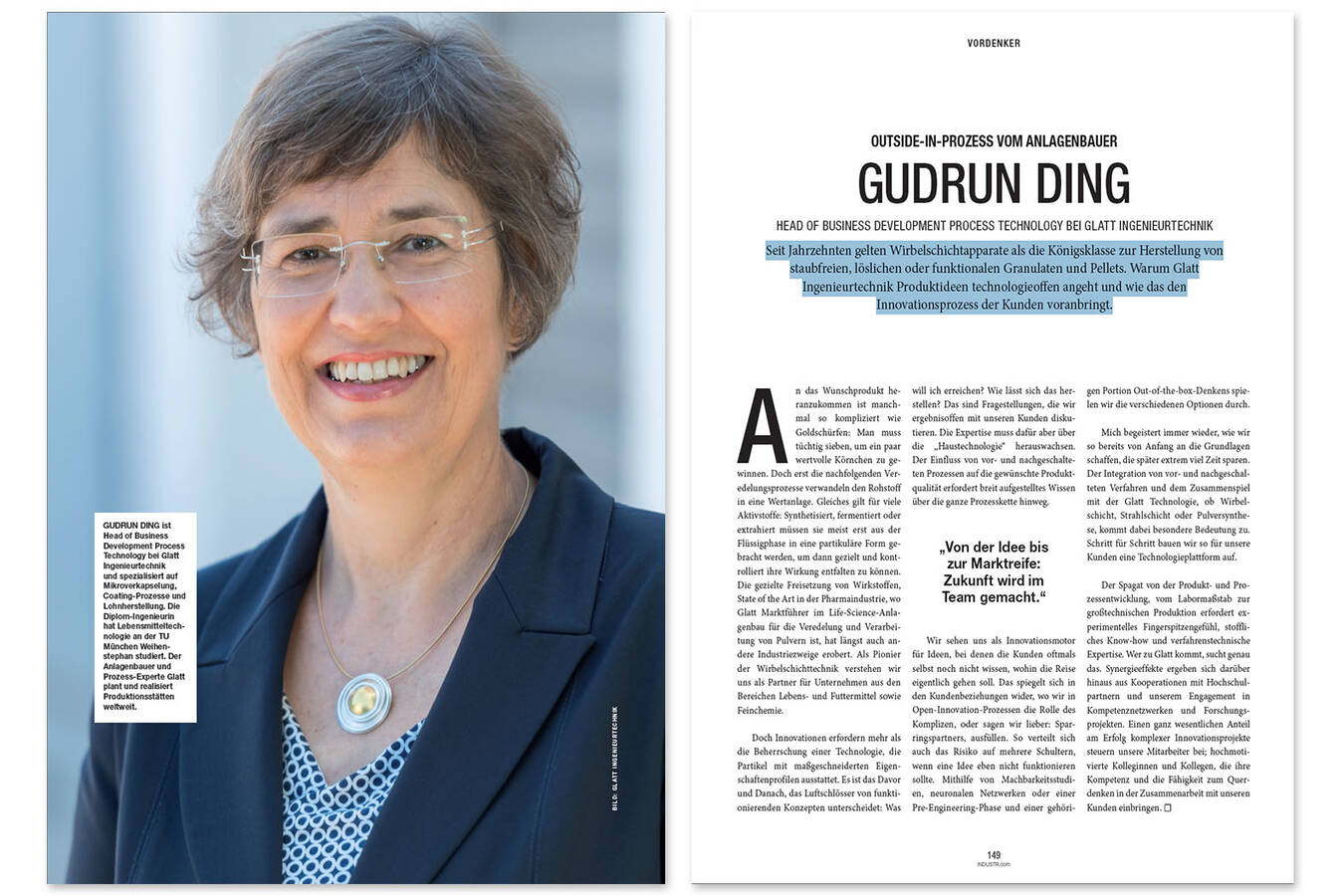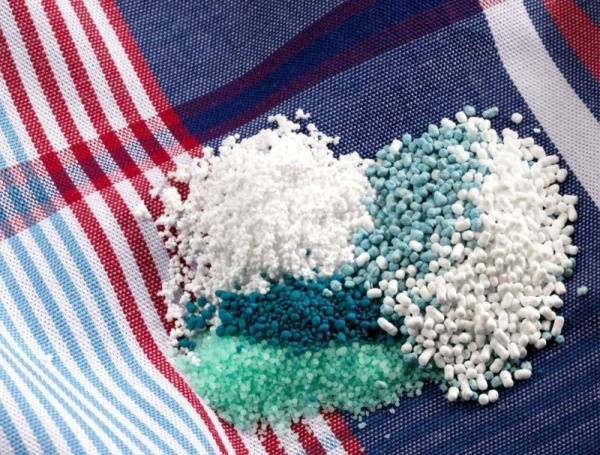As a manufacturer of consumer goods, the detergent industry must respond to megatrends like no other. One of these drivers is sustainability; eco-friendly biosurfactants have been available since 2009 and, now, alternative complexing agents such as α-ADA or MGDA-Na3 can be produced from renewable raw materials and used to replace phosphates. According to the German Zukunftsinstitut (Future Institute), the neo-ecology megatrend is causing a reorientation of the values of global society, culture and politics and will have a defining impact on the 2020s [1]. Consumers and business partners alike are asking about transparent value creation and whether social aspects are being considered. As an example, seamless traceability has long been standard practice. Yet, the ongoing microplastics debate calls for a rethink when it comes to encapsulated fragrances or when the fibres of functional clothing have to be fished out of wastewater. Solutions for all these requirements can only be realised if the chemical industry and original equipment manufacturers work closely together. Innovative raw materials is one side of the coin; technological advances in laundry washing is the other.
An interplay of forces
Saving resources such as water and energy raises fundamental questions in terms of cleaning, which can be divided into four key factors: temperature, time, mechanical force and chemical functionality. For overall effectiveness, if one of these components is reduced, the others must become correspondingly more efficient.
- For low-temperature detergents, for example, stain removal is relatively difficult and requires catalysts that activate bleaching agents in the formulation.
- Likewise, the thermal inactivation of bacteria at temperatures < 40°C can only be achieved by biocides, but these are critical because they promote resistance.
- Energy savings can be compensated by higher mechanical forces in the washing machine; but, for synthetic fibres, this means more microplastics.
Thus, many attempts at optimisation induce conflicting side-effects, which must be carefully assessed. Ultimately, the easiest way to overcome these issues is to improve the washing activity itself and extend cleaning times. Two groups of ingredients that are particularly important when it comes to optimising the cleaning effect are surfactants and catalysts, especially enzymes. More compact detergents also reduce the consumption of raw materials and packaging materials.
Great success from small particles
Smaller particles offer a range of benefits, such as lower bulk densities, improved dosing and a consistent composition. There is also greater scope for specific shapes, sizes and the release of particular ingredients. An enabler of such solutions is fluidised bed processing, which facilitates the preparation of user-defined particle (Fig. 1). Chemical synthesis can also be augmented by simultaneously targeting different areas of the fluidised bed with separate spray liquids. The wide range of available options allows a diverse array of end product properties to be achieved, which are further influenced by the properties of the starting materials, the plant geometry and fine-tuned process parameters.
Ingenious biocatalysts
Enzyme granulation provides a good illustration of the effect of the various variables. Enzymes play a key role as biocatalysts in detergents. They break down organic substances in the fabric, which can then be washed out in small, water-soluble fragments. Proteases are used to treat protein-containing dirt, lipases for fatty stains and cellulases help to smooth fibres. As high molecular weight proteins, enzymes are temperature-sensitive and potential allergens that have a sensitising effect upon contact or inhalation. Strict guidelines are applied for work areas where enzyme dust occurs. In detergent production, concentrations of ≤15 ng/m³ in the ambient air are required to avoid sensitisation [2]. Granulated, compact enzyme particles show hardly any abrasion and are also easy to film coat (Fig.2). This not only provides additional protection for the user, the enzyme itself demonstrates improved stability in the detergent during storage. To be able to produce a wide variety of applications – from powders to pellet-shaped compact detergents to dishwasher tabs – enzyme particles of different sizes and formulations with coordinated activities are required.
End product properties: abrasion stability and particle size
If the target is a dust-free enzyme particle with a defined particle size, which is also uniformly round and has an even surface, various processes are available. Enzymes are obtained by fermentation and accumulate as a solution with a very low dry weight. Traditionally, drying is done in a spray tower wherein the drying time is limited by the fall height. Owing to the plant geometry, the atomised liquid droplets must dry within a few seconds before they are discharged at the lower outlet. The result is a fine powder. Integrated agglomeration by recirculation optimises the product properties in terms of particle size, but not abrasion stability (Fig.3) [3]. If the spraying direction changes, for example, the atomising and drying process delivers completely different particles (Fig.4).
Spray granulation brings enzymes into shape
Although the dust particles combine with the spray solution in the tower dryer to form an agglomerate, during spray granulation in a spouted bed apparatus (a further development of the fluid bed, Fig. 5), they serve as starter cores for continuous layering. Owing to the reversal of the spray direction and the geometry of the spray zone in the process chamber, the finely atomised droplets of the enzyme solution are spread onto the surface of starter cores. They evaporate directly in the area of the spouted bed around the nozzle. The required energy is absorbed from the conditioned air stream in the immediate environment of the product, which reduces the thermal load on the sensitive protein molecules (Fig. 6). The dried granules then fall back and are conveyed past the spray nozzle until they are finally discharged. The required size is determined by sieving out the desired fraction, which is then fed back into the process – as well as ground top grain – and forms new starter nuclei. These are required for stable process control and uniform particle size distribution. The surface quality depends on the solids content, viscosity and stickiness of the spray solution. An excessive solids content leads to a rougher surface and increases the potential for dust formation. The spouted bed process is particularly suitable for drying enzyme solutions to form uniform granules, which build up their very compact, smooth surface from low-concentration solutions.
Drying, agglomeration, synthesis
Most particle formulation processes work purely physically and are based on drying and agglomeration. The inclusion of chemical synthesis opens up further formulation possibilities for active ingredients and complete mixtures. The advantage here is that multi-step manufacturing processes such as wet chemical synthesis combined with filtration and drying can be done in a single step.
Reactive spray and binder granulation
The process of reactive spray granulation is gaining more and more importance in a wide range of applications (Fig. 7). As early as the 1990s, Glatt developed and patented technical solutions for the reactive granulation of sodium percarbonate as a bleaching or oxidising component in fluidised beds [EP 0787 682 B1]. The major challenge was to enable the chemical reaction of hydrogen peroxide and sodium carbonate to take place in the fluid bed. However, if the two reactant solutions of hydrogen peroxide and sodium carbonate are introduced into the fluid bed together through the same spray nozzle, the components usually crystallise very quickly. This clogs the spray nozzle and leads to operational downtime. When using fluidised bed apparatus, a hydrogen peroxide and a soda solution are sprayed onto sodium percarbonate cores via two separate spray nozzles, with water being evaporated at the same time. The disadvantage of this process is that it’s difficult to achieve homogenous mixing if the reactants are introduced into the granulation apparatus via two or more spatially separated spray nozzles.
Playing with atomisation technology
Yet, German patent [DE 20 60 971] elucidates a way to integrate a special type of spray nozzle for use in reactive spray granulation processes. The intensive mixing of the educts should lead to a better product quality and yield, which is achieved immediately after they’re injected into the spray mist. Special spray nozzles of this type are designed as threeor four-component units in such a way that, in this example, two spray solutions are conveyed separately to the nozzle outlet and are pneumatically atomised with the aid of one or two atomising agents (Fig.8). The various liquid and atomising gas lines are arranged concentrically: liquid one is delivered in the centre of the arrangement (up to the top of the nozzle) where an annular gas line provides the atomisation. The unit is in turn surrounded in a ring by a second liquid line, which is encased by an external second atomising gas line. This design ensures that when different liquids are supplied separately, the two spray liquids first mix outside the nozzle in the spray cone and then react with each other in the spray jet. The particle formation or granulation takes place simultaneously. This basic principle can also be applied to other reactive fluid bed formulation processes such as spray granulation, agglomeration or coating.
Why anionic surfactants are treated in compartments
Another example from the field of reactive detergent granulation is the formulation of anionic surfactants in fluid beds. For example, sodium alkylbenzene sulfonate (LAS-Na), one of the world’s most widely used anionic surfactants for detergent powder formulations, can be formulated by injecting alkylbenzene sulfonic acid (HLAS) onto a fluidised bed of sodium carbonate particles. The neutralisation process forms a dry product that can be mixed with other detergent components and/or used for compression [4]. In some cases, structuring agents are also integrated into the reactive formulation process of LAS-Na. The same obstacles occur as in the reactive spray granulation of sodium percarbonate. Mixing the components before the spray process would lead to solidification of the liquids and thus disrupt the injection process. Multi-component nozzles or compartmentalisation – reaction zones – help to eliminate these material-related challenges. In general, the main hurdles in reactive spray granulation are the interaction of reaction and particle growth kinetics as well as the wetting and drying behaviour of the fluidised particles. This results in a need to optimise the residence time distribution and adjust both the fluid injections and the thermodynamic conditions. For the transition from batch to continuous processing, this interplay must be considered and further investigated to ensure successful process development. If horizontal fluidised beds are divided into several zones, this reduces the residence time distribution, equalises the flow and thus allows several (different) steps to take place in a continuously operated apparatus. This not only enables new product shapes and manufacturing processes to be developed, it also has a direct effect on product homogeneity.
For example, reactive spray granulation can be done in the first zone and subsequent drying, cooling or other types of thermal treatment can be done in a downstream part of the apparatus. Compartmentalisation also helps to separate incompatible substances into different processing zones.
Conclusion: size is important
Highly reactive detergent components are safer and easier to handle if the particles have a compact structure, a specific size and a dense surface structure. Fluid and spouted bed processing offer two state-of-the-art technologies that enable tailor-made particle design for safe application and perfect cleaning performance.
Authors: Gudrun Ding, Arne Teiwes
Gudrun Ding is Head of Business Development Process Technology at Glatt Ingenieurtechnik and specializes in microencapsulation, coating processes and contract manufacturing.
Arne Teiwes is Process Engineer, Process Technology Food, Feed & Fine Chemicals, Glatt Ingenieurtechnik GmbH
» originally published in SOFW Journal, issue 10/2020, Verlag für chemische Industrie H. Ziolkowsky GmbH
References
[1] zukunftsInstitut. Access 31 July 2020. Website: zukunftsinstitut.de
[2] Cyril Martela, Gunnar D. Nielsenb, Adriano Maric, Tine Rask Lichta, Lars K. Poulsena (2010). Scientific / Technical report submitted to EFSA. Bibliographic review on the potential of microorganisms, microbial products and enzymes to induce respiratory sensitization1, CFP/EFSA/FEEDAP/2009/02: page 12 ff.
[3] Kessler, H.G (2011). Food and Bioprocess Engineering - Dairy Technology. 2. Reprint. Publisher A Kessler: Page 270 ff.
[4] Sarah Germaná, Stefaan Simons, JudithBonsall, BrendanCarroll. LAS acid reactive binder: Wettability and adhesion behaviour in detergent granulation. Powder Technology. Vol. 189, Issue 2, Jan. 2009.


